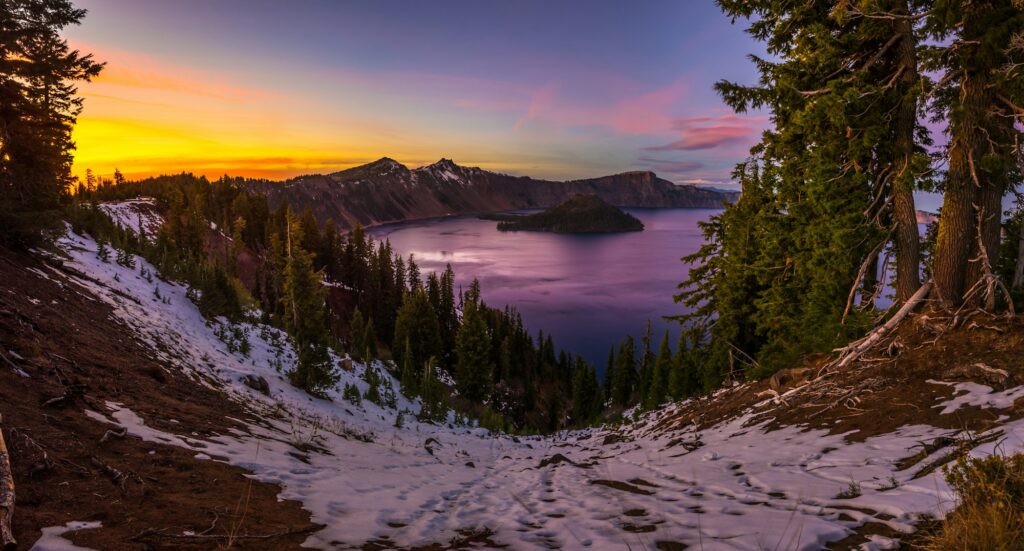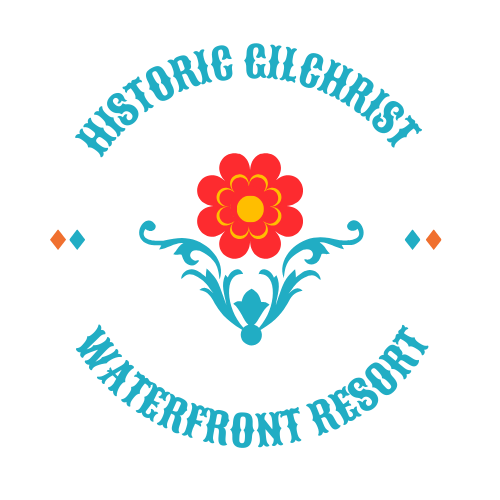
Discovering Crater Lake National Park
Crater Lake National Park is one of Oregon’s most breathtaking destinations. This stunning park is home to the deepest lake in the United States and offers plenty of opportunities for adventure and relaxation. Let’s dive into what makes Crater Lake so special and explore some of the best activities you can enjoy.
The Formation and History of Crater Lake
Crater Lake formed over 7,700 years ago when a massive volcanic eruption caused Mount Mazama to collapse. This explosion left a deep caldera, which eventually filled with rainwater and snowmelt to create the lake we see today. Unlike many lakes, Crater Lake has no rivers flowing in or out. This contributes to its incredible clarity and deep blue color, making it a truly unique natural wonder.
Exploring the geological history of Crater Lake offers a fascinating glimpse into the Earth’s ancient past. The caldera’s steep, rugged walls and the surrounding volcanic landscape provide clues to the immense power of the eruption that shaped it.
Popular Activities at Crater Lake
Crater Lake isn’t just for looking; it’s also a playground for outdoor enthusiasts. Here are some popular activities you can enjoy:
-
Hiking: The park offers a variety of trails, from easy walks to challenging hikes. The Cleetwood Cove Trail is the only trail that leads to the lake’s shore. It’s a steep hike, but well worth the effort.
-
Boat Tours: During the summer, you can take a scenic boat tour around the lake. These tours offer stunning views of the caldera walls and the chance to see Wizard Island up close.
-
Snowshoeing and Skiing: In the winter, Crater Lake is transformed into a snowy wonderland. Snowshoeing and cross-country skiing are popular activities, with several trails available for winter sports enthusiasts.
-
Camping: For those who want to immerse themselves in nature, the park has campgrounds where you can pitch a tent and sleep under the stars.
Scenic Views and Photography
Crater Lake is a photographer’s dream. The deep blue water, dramatic cliffs, and surrounding forests provide endless opportunities for stunning photos. Here are some of the best spots for capturing the beauty of Crater Lake:
-
Rim Drive: This scenic drive offers numerous viewpoints where you can stop and take in the breathtaking views. Each viewpoint provides a unique perspective of the lake and the caldera.
-
Watchman Overlook: This is one of the most popular spots for photography. From here, you can capture panoramic views of the lake and the surrounding landscape, especially during sunrise and sunset.
-
Wizard Island: If you take a boat tour, you’ll have the chance to photograph Wizard Island up close. This cinder cone island adds a dramatic element to the lake’s already stunning scenery.
Crater Lake National Park is a must-visit destination for anyone exploring Central Oregon. Its striking beauty and array of activities ensure that there’s something for everyone to enjoy. So grab your camera, lace up your hiking boots, and get ready to experience one of Oregon’s most spectacular natural wonders.
Planning Your Trip to Central Oregon
Central Oregon is a treasure trove of natural beauty and adventure. Whether you’re planning to explore Bend’s vibrant culture or marvel at the stunning Crater Lake, preparation is key. Here’s everything you need to know to make your trip unforgettable.
Best Times to Visit
Choosing the right time of year for your trip can enhance your experience. Here’s a quick guide to help you decide when to visit Bend and Crater Lake:
- Spring (April to June): Spring in Central Oregon is a delight. The wildflowers are in bloom, and the weather is perfect for hiking and biking. In Bend, this is a great time for outdoor activities without the summer crowds.
- Summer (July to September): Summer is peak season for both Bend and Crater Lake. This is the best time for water sports, camping, and taking scenic boat tours on Crater Lake. The weather is warm, and the days are long, giving you plenty of time to explore.
- Fall (October to November): Fall offers a quieter experience with cooler temperatures and stunning fall foliage. It’s a fantastic time for photography and hiking.
- Winter (December to March): Winter transforms the region into a snowy wonderland. Bend’s Mount Bachelor is perfect for skiing and snowboarding, while Crater Lake offers snowshoeing and cross-country skiing.
Travel Tips and Accommodations
Planning your trip can be overwhelming, but these travel tips should make it easier:
- Getting There: The nearest major airport is Redmond Municipal Airport, just 20 minutes north of Bend. From the airport, you can rent a car to explore the region. If you’re driving, Highway 97 is the main route that runs through Central Oregon.
- Where to Stay: Bend offers a variety of accommodations from cozy lodges to luxury resorts. Popular choices include:
- The Oxford Hotel: A boutique hotel in downtown Bend with modern amenities.
- McMenamins Old St. Francis School: A unique hotel experience with a movie theater and brewery on-site.
- Camping: For a rustic adventure, consider camping near Crater Lake. Several campgrounds offer a chance to sleep under the stars.
- What to Pack: Central Oregon’s weather can be unpredictable, so pack layers:
- Spring and Summer: Lightweight clothing, hiking boots, sunscreen, and a hat.
- Fall: Warmer layers, a good jacket, and sturdy hiking shoes.
- Winter: Heavy winter coats, snow gear, and thermal wear. Don’t forget a camera to capture the snow-covered landscapes.
Sustainable Travel Practices
Traveling sustainably helps preserve Central Oregon’s natural beauty for future generations. Here are some tips to help you minimize your impact:
- Stay on Trails: Always stick to marked trails to protect the fragile ecosystem. Wandering off trail can damage vegetation and disturb wildlife habitats.
- Pack It In, Pack It Out: Bring reusable containers and bags. Take all your trash with you and dispose of it properly.
- Use Public Transportation: In Bend, consider using public transportation or biking to get around the city. It reduces your carbon footprint and lets you see the area from a different perspective.
- Respect Wildlife: Observing wildlife from a distance is crucial. Never feed animals or leave food scraps behind.
- Support Local Businesses: Eat at local restaurants, stay in locally-owned accommodations, and buy souvenirs from local shops. Supporting the local economy can foster sustainable tourism.
There’s no better way to experience Central Oregon than by planning thoughtfully and traveling responsibly. These tips should help you prepare for an amazing adventure filled with unforgettable memories.

Hi, this is a comment.
To get started with moderating, editing, and deleting comments, please visit the Comments screen in the dashboard.
Commenter avatars come from Gravatar.